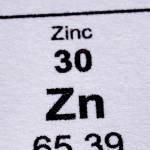Zinc and Equine Viral Diseases: What’s the Link?

Viral diseases of horses, especially those that cause neurologic signs such as changes in behavior, incoordination, and muscle tremors, can have earth-shattering consequences. Examples of viruses responsible for neurologic disease in horses include the eastern and western equine encephalitis viruses and the West Nile virus, among others.
In addition to causing respiratory disease and abortion, a mutation of the equine herpesvirus-1 (EHV) is known to cause neurological signs, a condition referred to as equine herpesvirus myeloencephalopathy (EHM). Treatment of affected horses is supportive, meaning there are no specific treatments or antivirals currently available. Further, none of the vaccines licensed for EHV-1 are approved for protecting horses against EHM.
Without medical cures and effective vaccinations, what tools do owners have for safeguarding horses against EHM? According to studies in humans and a recently published study in horses*, the answer could be as simple as zinc.
“Horses fed supplemental dietary zinc reportedly have a decreased risk of EHM compared to horses not supplemented with zinc,” relayed Kathleen Crandell, Ph.D., an equine nutritionist for Kentucky Equine Research (KER).
Zinc, a trace mineral, is an important cofactor for hundreds of enzymes throughout the body, including enzymes found within cells of the immune system such as B and T cells. Both of those cell types play important roles in fighting infections, and specific T cells, called cytotoxic or killer T cells, are believed to be particularly important in fighting EHV-1.
“One hypothesis is that if killer T cell levels in the bloodstream are low due to low levels of zinc in the body, then the horse is not capable of fighting EHV-1 infections, predisposing zinc-deficient horses to EHM,” Crandell said.
Further, zinc may have a direct antiviral effect on EHV-1 and other herpesviruses.
Before running out and super-supplementing with zinc, however, recall that all micronutrients must be balanced. For example, an excess of dietary zinc can impair the body’s ability to absorb copper from the diet, potentially resulting in signs of copper deficiency.
“Current recommendations by the National Research Council are to feed 40 mg of zinc/kg of dry matter. That said, research conducted at KER indicated that lower levels appear well tolerated in the short-term at least and do not result in immediate signs of deficiency,” Crandell said. “However, the effects of long-term undersupplementation of trace minerals are not as clear-cut, especially in regard to optimal nutrition and disease resistance. Optimal levels of daily zinc intake may actually be higher than the NRC recommendation.”
Further research is clearly warranted to identify the appropriate “dose” of zinc, and to determine if zinc truly can protect horses against EHV-1, EHM, and other neurological viral diseases. In the meantime, ensuring your horse receives the recommended daily amount of essential vitamins and minerals can easily be achieved by feeding a well-formulated feed at a level recommended by the manufacturer or a research-proven supplement, such as Micro-Max or other KER products available in your area. In Australia, choose Gold Pellet, Perform, or Nutrequin.
*Traub-Dargatz, J.L., A.M. Pelzel-McCluskey, L.H. Creekmore, et al. 2013. Case-control study of a multistate equine herpesvirus myeloencephaolapthy outbreak. Journal of Veterinary Internal Medicine. 27(2):339-346.








